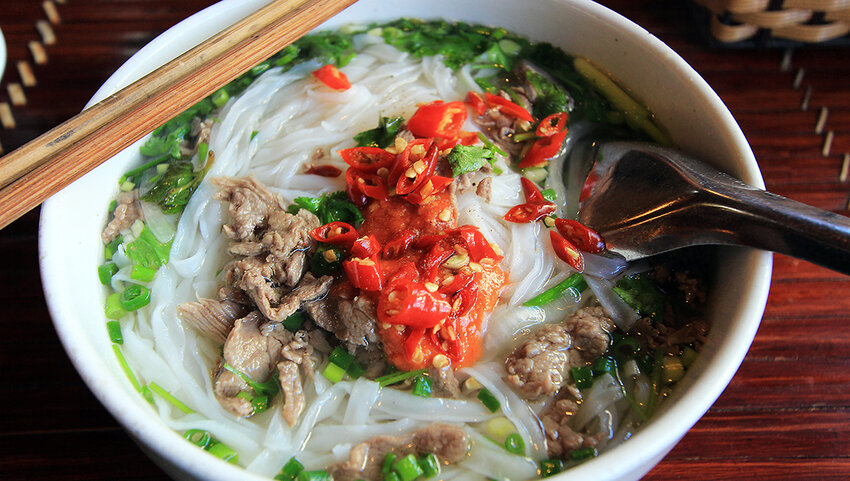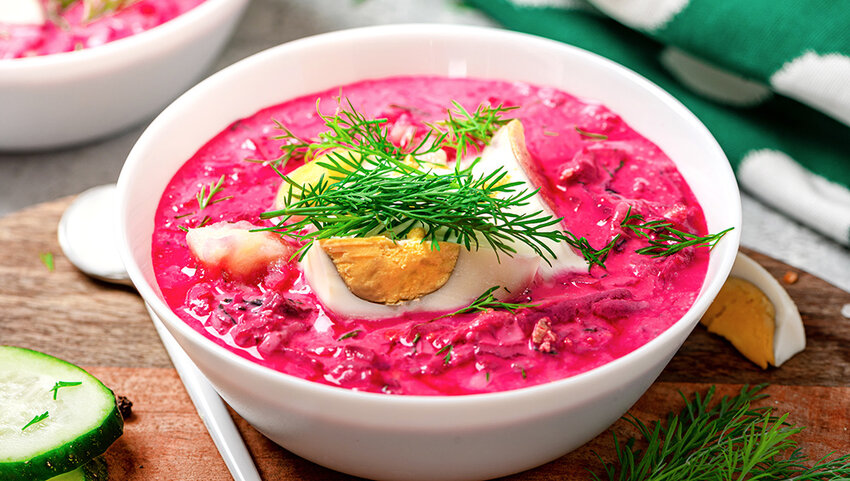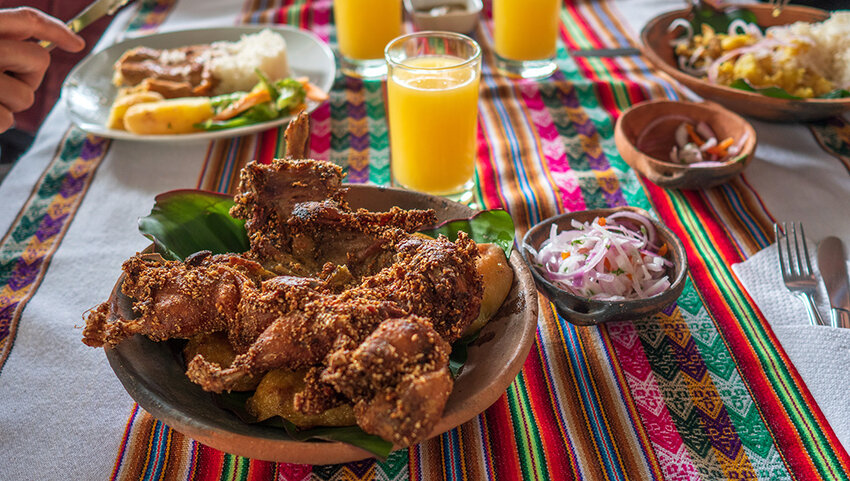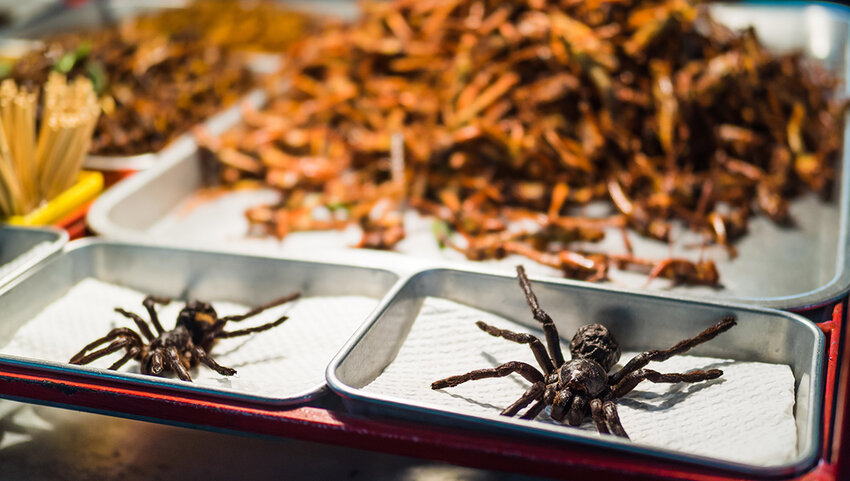Dinuguan should be included in this List. I cooked this dish prior to my move here at THD.
In case, you have not heard of this dish, here's what Wikipedia says:
 A bowl of dinuguan and a plate of puto | |
| Alternative names | Pork blood stew, blood pudding stew |
|---|---|
| Type | Stew |
| Course | Main course |
| Place of origin | Philippines |
| Serving temperature | Hot |
| Main ingredients | Pork offal, pig's blood, vinegar, garlic, siling haba |
Dinuguan (Tagalog pronunciation: [dɪnʊgʊˈʔan]) is a Filipino savory stew usually of pork offal (typically lungs, kidneys, intestines, ears, heart and snout) and/or meat simmered in a rich, spicy dark gravy of pig blood, garlic, chili (most often siling haba), and vinegar.
Etymology and names


The most popular term, dinuguan, and other regional naming variants come from their respective words for "blood" (e.g., "dugo" in Tagalog means "blood," hence "dinuguan" as "to be stewed with blood" or "bloody soup"). Possible Englishtranslations include pork blood stew or blood pudding stew.
Dinuguan is also called sinugaok in Batangas, zinagan in Ibanag, twik in Itawis, tid-tad in Kapampangan, dinardaraan in Ilocano, dugo-dugo in Cebuano, rugodugo in Waray, sampayna or champayna in Northern Mindanao, and tinumisin Bulacan and Nueva Ecija. A nickname for this dish is "chocolate meat".
One of the greatest pleasures of traveling the world is indulging in mouthwatering local cuisine. From hearty comfort foods to delectable sweet treats, many of these dishes offer a fascinating glimpse into the culinary history of the cultures where they were invented. Plus, they’re just plain delicious. Expand your palate when traveling abroad by sampling foods you’ve never experienced before. Here are 8 irresistible delicacies from around the world that you need to try. From Discoverer.com
Scandinavians love to eat fish, and the semi-translucent and gelatinous dish known as lutefisk is a Nordic classic. Originating in the 16th century, the secret to developing a perfect lutefisk texture is to soak a whitefish in water for 5-6 days, then lye (aka sodium hydroxide) for 2 days, and finally water again for 4-6 days. The fish are then covered in a layer of salt and either steamed or baked before being served alongside boiled potatoes, mashed peas, and fried bacon. Interestingly enough, Scandinavian immigrants have made lutefisk a popular regional treat throughout the state of Minnesota, allowing some Americans to try it back home even if they can’t make it over to Norway.
2. Masala Dosa — India

Masala dosa is a savory type of pancake popular in the southern portion of the Indian subcontinent. This isn’t your typical sugary pancake, but rather one made from a mix of soaked rice and lentils that are cooked into a thin tube. Each masala dosa is then stuffed with filling ingredients such as potatoes and onions, before the dish is topped with coconut and coriander, and served alongside various sauces and chutneys. You'll have a hard time finding a more filling and satisfying dish anywhere in the country.
3. Pho — Vietnan

There’s nothing that hits the spot quite like a warm bowl of pho, a noodle soup served in the country of Vietnam. To properly prepare pho, chicken or beef bones are stewed in broth for several hours, thus creating a deep, umami flavor. That rich broth is then perfectly complemented with soft rice noodles, tender strips of meat, and plentiful handfuls of bean sprouts. Each person can customize their pho to their liking, throwing in some fresh mint leaves, spicy slices of jalapeño peppers, and some sweet and salty hoisin sauce to add even more depth of flavor to the soup base.
4. Poutine — Canada

Poutine is a traditional Quebecois dish that was invented back in the 1950s. This hearty and indulgent side dish includes a base layer of french fries topped with cheese curds and brown gravy. The fries are often a coarser cut than normal fries, allowing them to develop a crispy exterior while maintaining a soft bite inside. You’ll find poutine on the menu everywhere from diners and pubs to hockey stadiums and street stands. While traditionalists may tell you to stick to the original recipe, poutine vendors throughout Canada are known to experiment with toppings such as brisket, foie gras, and truffles.

Uni is a creamy, bright orange delicacy in Japan, though it may not be clear where it comes from at first glance. The answer? Sea urchin. That’s right, uni is the Japanese name for the organ of a sea urchin that produces its roe, and is the only edible part of the otherwise spiny creature. Uni is considered the highlight of many Japanese menus, and often shines as the centerpiece of sushi tasting menus known as omakase. Uni can be served over rice, on its own, or accompanying a nice slab of wagyu beef. However you enjoy uni, it’s absolutely worth trying.
Uni is a creamy, bright orange delicacy in Japan, though it may not be clear where it comes from at first glance. The answer? Sea urchin. That’s right, uni is the Japanese name for the organ of a sea urchin that produces its roe, and is the only edible part of the otherwise spiny creature. Uni is considered the highlight of many Japanese menus, and often shines as the centerpiece of sushi tasting menus known as omakase. Uni can be served over rice, on its own, or accompanying a nice slab of wagyu beef. However you enjoy uni, it’s absolutely worth trying.
6. Chłodnik — Poland

Chłodnik is a catch-all Polish term for cold vegetable soup, though the most popular choice is a version made from beetroot known as chłodnik litewski. Each bowl of this refreshing broth is made by blending beetroot with cucumbers, radishes, and a dairy element such as yogurt or sour cream. The soup develops a bright pink hue during the preparation process, making it appealing to the eye. Finally, the dish is garnished with hard-boiled eggs, dill, and chives before being served. If possible, it’s best to let chłodnik sit for two days prior to eating, as that allows enough time for the ingredients to combine and produce optimal flavor.
7. Cuy — Peru







No comments:
Post a Comment